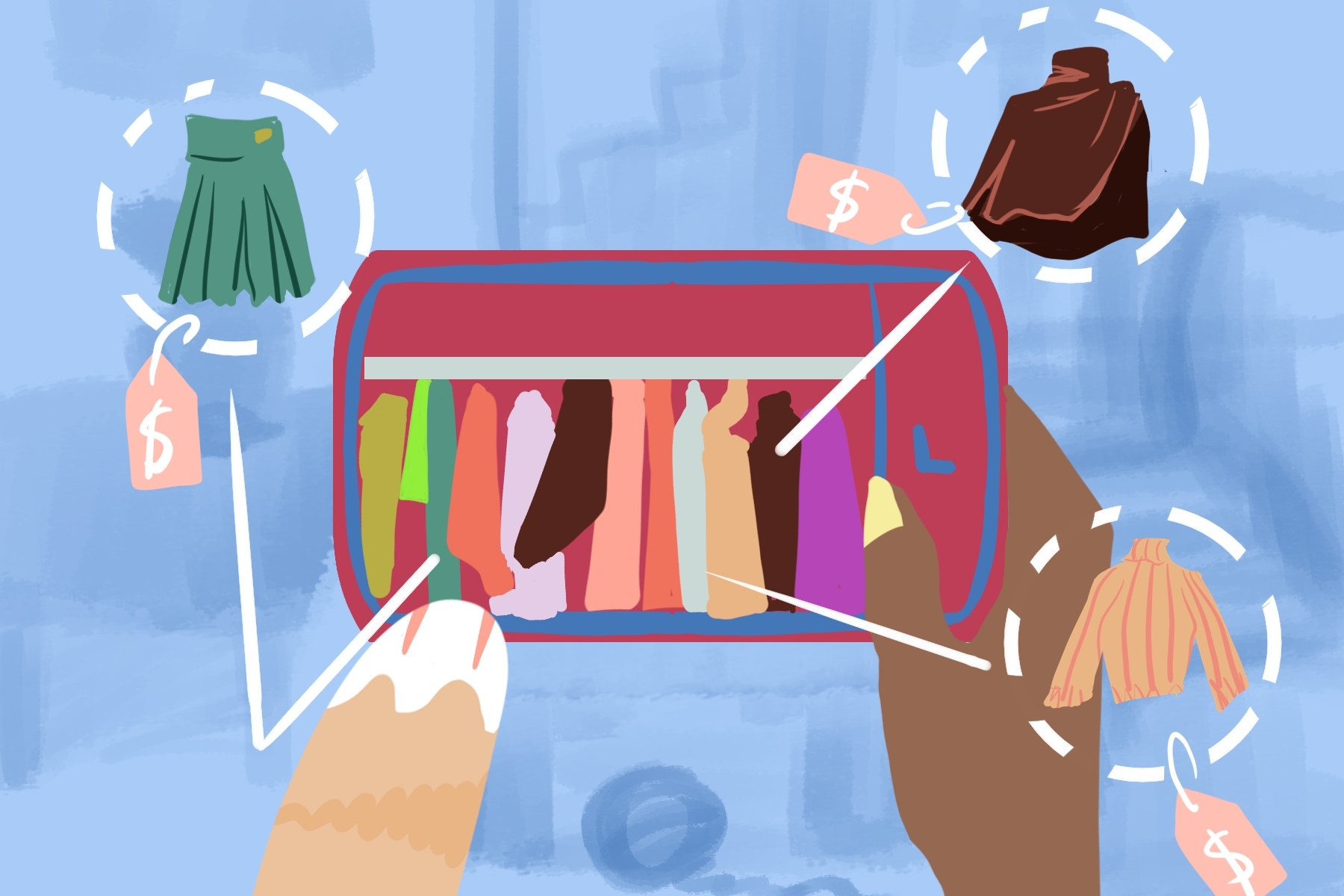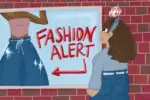Shopping at thrift stores, or thrifting, has been increasing in popularity for the last several years, especially among Gen Zers. What was once stigmatized and seen as shameful has become the new, trendy way to buy clothes. Many people now see thrifting as one of the best ways to update their wardrobes ethically and for an affordable price, especially since there are plenty of thrift stores to choose from online.
Like many other members of Gen Z, I’m also a fan of thrifting. The appeal of getting new clothes in a more affordable, sustainable and environmentally friendly way is undeniable, and the search for something cute among the full clothing racks at my local Goodwill is exciting.
I’ve also been aware of the online platform Depop for a while, and I’ve purchased a few items from various sellers before. But it wasn’t until I recently landed on the anti-Depop side of TikTok that I became aware of the debate regarding the connection between reselling thrifted clothing on Depop and the gentrification of brick-and-mortar thrift stores.
The company was founded in 2011 and, like thrifting, has been increasing in popularity since it was created. Depop is a sort of mix between a social media platform and an online shopping platform. The app’s layout is reminiscent of Instagram combined with the buying and selling features of sites like eBay or Etsy.
Depop currently has over 15 million users, and the platform is primarily used for people to buy and sell clothing, shoes and accessories. However, the specific practice of reselling thrifted items for a profit has become popular among many of Depop’s sellers, and this subgenre of sellers has caught the attention of other social media users on TikTok and Twitter.
https://twitter.com/butterf1ycum/status/1286058536426967040
A Twitter thread discussing the problems with reselling thrifted clothing items for a profit blew up, with 159,000 likes, over 36,000 retweets and a long chain of replies debating the topic.
Several videos criticizing Depop resellers have been showing up on my TikTok For You page for a while now, but the one that first introduced me to the topic was made by the user hazel3na and has over 718,000 views and thousands of comments.
The main criticism people seem to have with reselling thrifted clothing items on platforms like Depop is that it leads to the gentrification of thrift stores. This, in turn, leads to stores increasing their prices, making it much more difficult for people who rely primarily on thrift stores to afford their clothing. When this happens, the idea of thrifting as a more ethical way to shop loses its merit.
https://www.tiktok.com/@hazel3na/video/6851371157409565958?source=h5_m
Gentrification has a few definitions, but it basically refers to the process of repairing or improving a deteriorating neighborhood, leading to “an influx of middle-class or affluent people … that often results in the displacement of earlier, usually poorer residents.”
Although the definition of gentrification primarily refers to neighborhoods, it can apply to thrift stores as well. The increased interest in thrifting from members of the upper class that’s been developing over the last decade could mean that thrift stores increase their prices in accordance with their new, wealthier clientele. This could displace the people from lower classes who were the primary consumers at thrift stores in the past.
There is some evidence that prices at thrift stores like Goodwill or Salvation Army have been increasing over the past few years, but it’s mostly anecdotal, coming from people’s own experiences that they’ve shared on the internet.
However, one article for The State Press compares Goodwill donation value guides from 2010 and 2020. The guides show that prices have not only increased for many clothing items over the past 10 years, but also that Goodwill now recommends a range of prices for all clothing items rather than a single fixed price. This implies that individual stores can change how they price their items based on how much they think customers might be willing to pay.
The popular trend of buying clothes from thrift stores and reselling them on Depop for a much higher price hastens the process of gentrification that’s already in motion. On top of that, people planning to thrift clothes just to resell them can buy lots of items at once with the knowledge that they’ll eventually get their money back, but that leaves fewer of the nice clothing items at thrift stores for people who actually need them.
Still, there are definitely benefits to thrifting; it’s more sustainable, ethical and environmentally friendly. It is true that buying used clothes from thrift stores is better for the environment because it means less clothing is thrown away, fewer resources are used to make new clothing and less pollution is produced.
Thrifting also keeps people from turning to fast fashion (cheaply made, trendy clothing), which is an extremely detrimental industry to the environment and has horribly unethical labor practices.
The increased popularity of thrifting is better for the environment and more ethical than fast fashion, but it also negatively impacts lower-income communities who depend on thrift stores for affordable clothing. So how should we, as consumers, approach the issue? If you can afford to buy new clothing elsewhere, should you stop shopping at thrift stores entirely?
No matter who you ask, the answers to both of these questions are opinions, so feel free to take mine with a grain of salt. But, in my opinion, the answer isn’t to bar yourself from thrift stores completely; instead, focus on being more conscious of what you’re buying.
In our world, it’s difficult to consume anything in a completely ethical way, but when it comes to clothing, buying second-hand items at thrift stores is still one of the best ways to minimize your contribution to the damaging environmental and human rights practices of the fashion industry.
I agree with the negative sentiments toward people who purchase large amounts of clothing from thrift stores with the aim of reselling them on Depop for their own profit. When you consider the effects it has on people who depend on thrift stores as their primary or only source of clothing, it’s difficult to consider the practice ethical.
However, if you approach thrifting with the intention of buying clothes for yourself, limiting yourself to items you’ll actually use and eventually donating your own clothing back to thrift stores, I don’t think you are part of the problem. Ultimately, thrifting can be a great way to shop for clothes ethically and sustainably — let’s not turn it into something negative by transforming it into a get-rich-quick scheme and making it inaccessible to the people who rely on it.

















